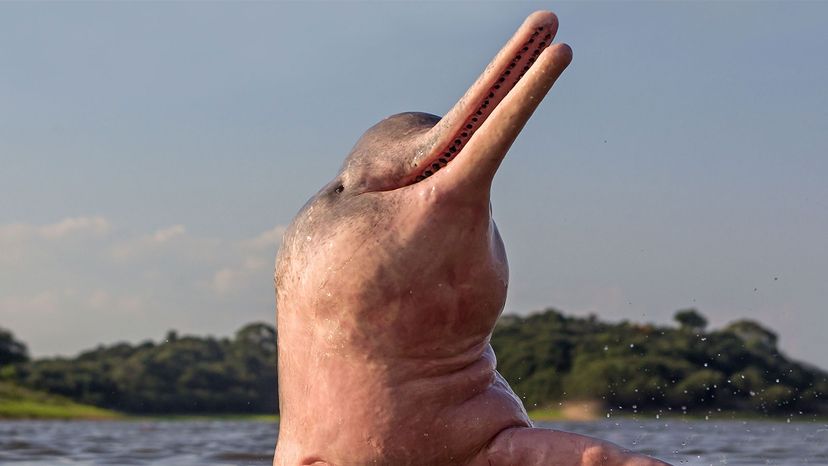The Amazon river dolphin (Inia geoffrensis), also known as a boto, is the largest species among river dolphins. It can measure up to 8 feet (2.4 meters) long and weigh around 450 pounds (204 kilograms) — as much as three full kegs of beer!
Size isn’t the only thing that sets the Amazon river dolphin apart: This freshwater dolphin, which thrives in the Amazon and Orinoco river, is sometimes shockingly pink.
Although born grey, adult males of the species are easily identified by a distinctly pink hue. Their unusual coloring, which is sometimes wholly pink and sometimes mottled with gray undertones, is believed to be the result of pink scar tissue from dolphin rumbles.
The richer the rosé, the more attractive the males are believed to be — and the older the male, the more the pink coloring he will have.
There’s also a theory that salmon-colored dolphins more readily blend in with their surroundings. During heavy rains, rivers along the Amazon basin turn a murky red/pink hue, and with their pink coloring, male dolphins are more easily camouflaged to catch fish and river turtles.

Sylvain CORDIER/Getty Images
The Amazon’s pink river dolphins are one of handful of freshwater dolphin species on Earth; they are aquatic mammals distantly related to saltwater-adapted marine dolphins and toothed whales. In addition to their distinctive pink color, the Amazon’s pink river dolphins have another feature that sets them apart from their saltwater cousins.
Unlike marine dolphins, which have a dorsal fin that protrudes from their backs, pink river dolphins have a hump instead. They are carnivorous and dine on any fish, crabs or turtles that hang out in the murky waters of the Peruvian Amazon and flooded forest.













